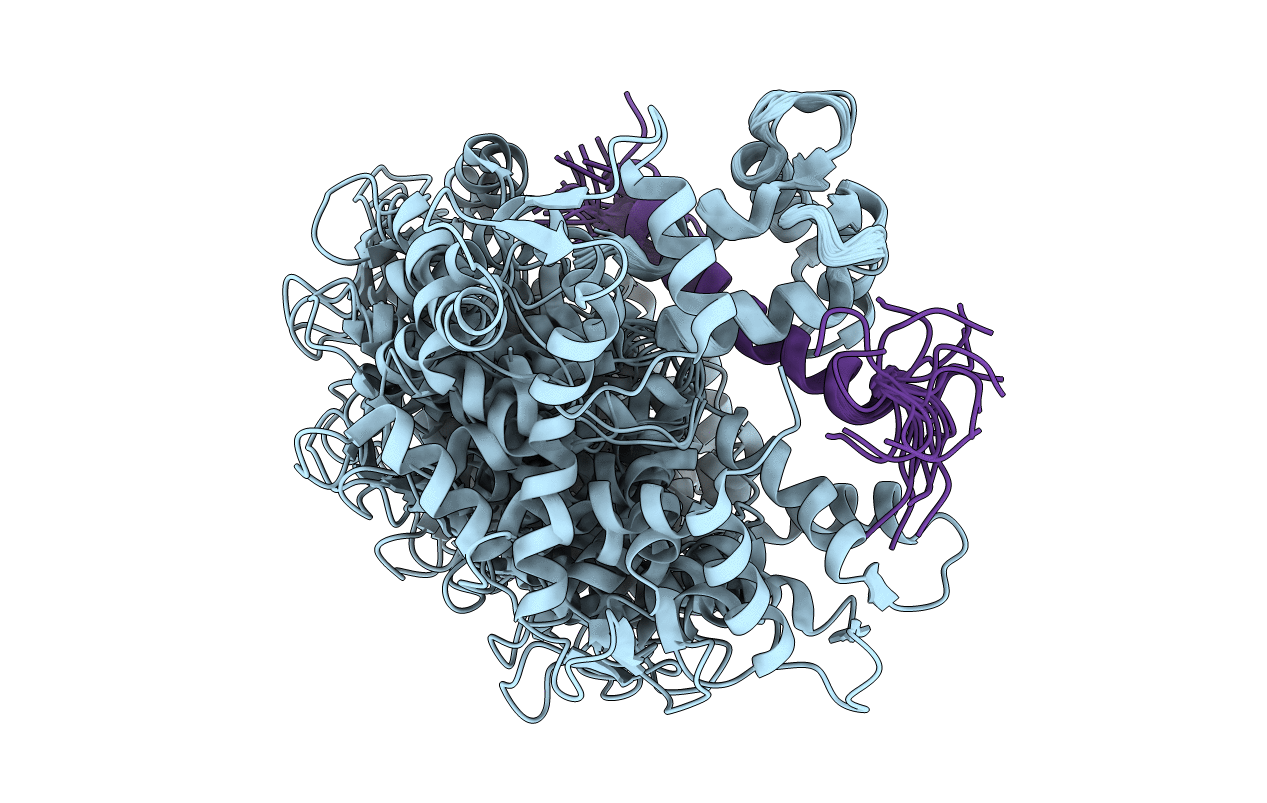
Deposition Date
2017-12-11
Release Date
2019-06-19
Last Version Date
2024-05-01
Entry Detail
PDB ID:
6BUT
Keywords:
Title:
Solution structure of full-length apo mammalian calmodulin bound to the IQ motif of the human voltage-gated sodium channel NaV1.2
Biological Source:
Source Organism:
Homo sapiens (Taxon ID: 9606)
Host Organism:
Method Details:
Experimental Method:
Conformers Calculated:
40
Conformers Submitted:
20
Selection Criteria:
structures with the lowest energy


